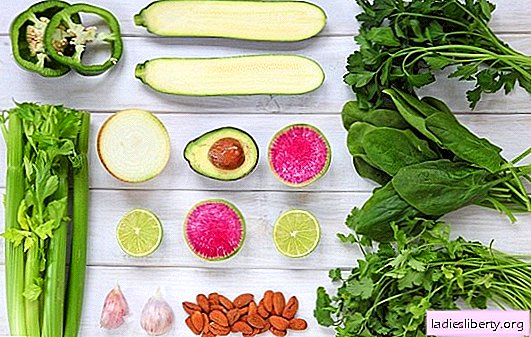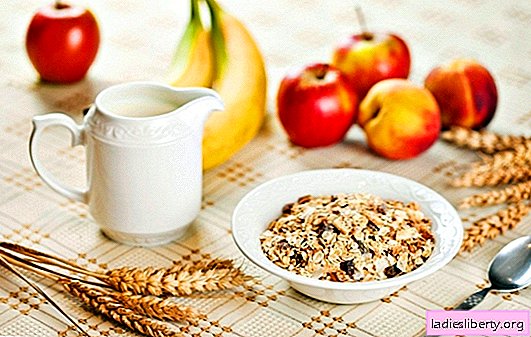
Monitoring sugar levels, calories, proteins, and other elements has long been an integral part of a healthy lifestyle. But concern for acid-base balance often recedes into the background. And this is fundamentally wrong, because knowing about it can help to positively affect the condition of the whole organism.
What you need to know about pH balance and the consequences of its violation
It is well known that almost 80% of the human body is composed of water. According to physicochemical laws, acids and alkalis in solution are in a certain ratio (measured in the interval from 0 to 14 units).
If pH balance tests are carried out, they will vary from 6.4 to 7.4 depending on the method of measurement (in urine, saliva or blood) and the time of day (morning or evening).
A significant shift in the pH balance down indicates excessive acidification of the body (in medicine it was called acidosis), up - about an excess of alkali (called alkalosis), but the first state, according to statistics, is much more common.
Naturally, the body always seeks to equalize the pH balance, lead to indicators of relative norm. And if necessary, it uses some means for this.
Sodium, magnesium and potassium - the removal of these minerals to neutralize high acidity, of course, worsens health over time, in particular:
• destroys bone tissue, which can lead to osteoporosis (especially in the elderly) and dental diseases;
• weakens the entire musculoskeletal system with the development of muscle weakness and pathologies of connective tissues (arthrosis, osteochondrosis, gout).
And these are far from the only consequences of acidosis, the list goes on, in particular, with such problems as:
• decrease in immunity;
• deterioration of blood saturation (and supply of internal organs) with oxygen;
• low digestibility of vitamins;
• tendency to gain weight;
• slowing down the metabolism;
• infertility in both sexes (and impotence in men);
• insomnia;
• deterioration of blood vessels and capillaries;
• atherosclerosis;
• development of pathologies of the kidneys and urinary system as a whole;
• chronic fatigue, apathy, depressed mood;
• increased irritability;
• decrease in mental abilities;
• increased risk of mental illness;
• violation of thermoregulation;
• accumulation of toxins and toxins;
• the occurrence of heart disease;
• deterioration in the functioning of the gastrointestinal tract (including heartburn, nausea after eating, belching, constipation and flatulence);
• skin diseases.
In addition, according to recent research by scientists, it is the acidified environment that is favorable for the development of all kinds of pathogenic microorganisms (including fungi) and even for the existence of cancer cells.
The reason for exceeding the body acidity norm is, first and foremost, an unbalanced, unhealthy diet.
The fact is that all the food known to mankind can be divided into two large groups:
• alkaline;
• acidic.
Science has established that in order to maintain an optimal pH balance, alkaline foods should prevail in the food list, accounting for 70-80% of the diet, and acidic foods can be present without harm by 20-30%.
But, as a rule, the nutrition of modern man consists of 90% of acid products.
Basic Alkaline Food List
Experts have repeatedly made attempts to classify alkaline products by the degree (strength) of exposure, but often scientists came to the conclusion that a lot depends on the individual characteristics (reactions) of the body.
Therefore, it is usually quite simple to focus on a list with alkaline foods and, according to the characteristics of your diet (dictated by personal tastes and health), choose from it:
• citrus fruits - orange, lemon, grapefruit;
• tropical fruits - pineapple, banana, kiwi, avocado;
• other fruits - apple, pear, grapes, peach, apricot, sweet cherry;
• berries - strawberries, raspberries, watermelon;
• dried fruits - raisins, dried apricots, dates;
• vegetables - beets, leaf salads, zucchini, onions, garlic, radishes, turnips, celery, carrots, asparagus, cucumber, pumpkin, cabbage (all kinds), bell peppers;
• green fresh peas and lentils;
• other plant products - olives, chestnuts, almonds (exception among nuts), sesame;
• wild rice;
• potato;
• sea kale;
• vegetable oils - olive, linseed;
• whole grain flour products (without yeast);
• dairy products;
• low-fat fish, chicken and turkey;
• soy products (from meat to milk);
• tea - green, white and red;
• herbal drinks (especially with ginger, Ivan tea, chicory);
Acid food list
Nutritionists urge in no case to exclude acid food from the diet, it is necessary no less than what is on the list of alkaline foods, because, as has already been said, the body needs balance.
The most oxidizing categories include, in general terms:
• all smoked (and therefore many sausages) products;
• highly salted and spicy (for example, red caviar, chips, home-made vegetable preparations) food;
• fried dishes;
• foods saturated with sugar and artificial additives (carbonated drinks, preserves and juices in packs);
• chocolate and all of it;
• alcoholic drinks;
• hotly beloved in the world of coffee and black tea.
Also, for completeness, the list should include:
• blueberries, cranberries;
• discharge;
• nuts;
• wheat flour products (especially finely ground, from bread and cookies to pasta);
• black (rye custard bread);
• corn, oatmeal, rice, buckwheat;
• tomatoes;
• dried peas;
• processed and hard cheeses;
• seafood (squid, octopus, crabs, oysters, mussels);
• sunflower and palm oil;
• butter and cream;
• eggs;
• fatty meat (as well as pork, horse meat, rabbit, venison, domestic goose, game);
• offal (liver, heart, kidneys).
What, in addition to food itself, affects the pH of the body
Speaking about the pH-balance it is impossible to forget about water - without its sufficient intake in water, its acidification is inevitable.
Nutritionists say the need to use 1.5-2 liters of fluid daily (also 30 ml per 1 kg of body weight can be taken as the calculation formula.
It is necessary to drink mainly water (filtered, mineral) and a little bit already named green and herbal teas, fresh juices, dairy and sour-milk products.
They should be taken 15-20 minutes before meals or 1-1.5 hours after it.
In addition, it is important to use the products themselves correctly, so that both of their varieties can have a positive effect on the state of the body.
First, no food or drink should be too hot or cold.
Secondly, it is worth remembering the good combinations that promote digestibility (covering lists of alkaline and acid foods) and that you should not mix at one meal:
• cheeses, meat and seafood, as well as mushrooms, may be mixed with each other and supplemented with a variety of vegetable crops;
• legumes can be combined again with vegetables, and very harmful - with fatty meat;
• fruits, berries and nuts combine well with each other and with all sour-milk, but not useful - with artificial sugars (the same beet sugar) and any grain products (including cereals for cereals and flour for baking);
• foods rich in starch (the main representative - potatoes) are harmless to eat with vegetables and extremely undesirable - with anything meat and flour products.











